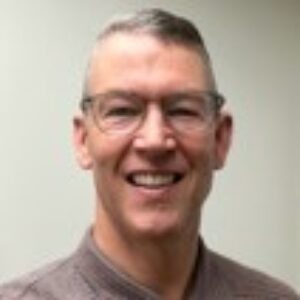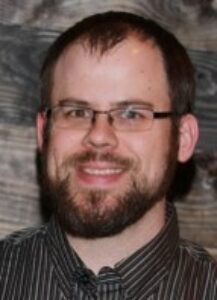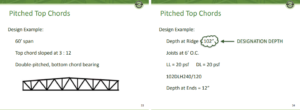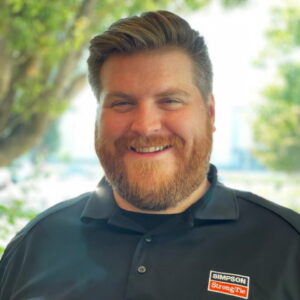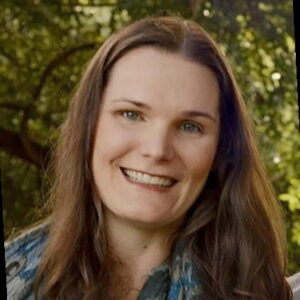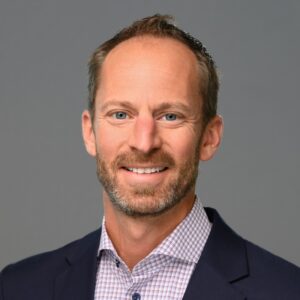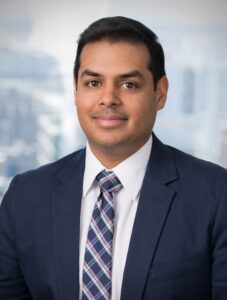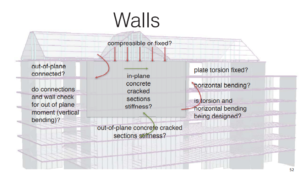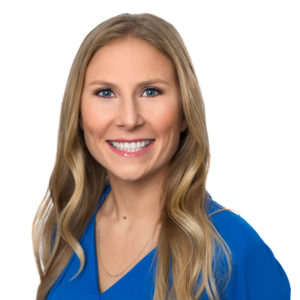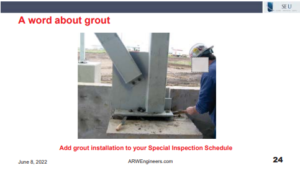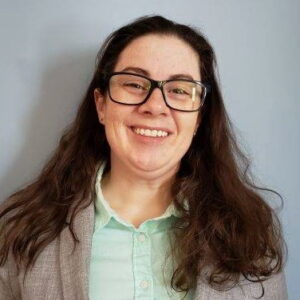29 Jan 2023
AISI Standards
In 2016, the North American Specification for the Design of Cold-Formed Steel Structural Members underwent a major reorganization to be more in-line with the AISC Specification for Structural Steel. Are you aware of the current AISI standards available and where to find design criteria for structural members or framing systems?
In the December 2022 SEU session, Roger LaBoube, PhD, PE, from Missouri University of Science and Technology, presented Cold-Formed Steel Standards (2022). Roger noted the available cold-formed steel design standards and identified changes to these standards as adopted by IBC 2021. He also clarified the interdependence of the cold-formed steel framing standards and the cold-formed steel specification.
While giving an overview of the North American Standards for Cold-Formed Steel Structural Framing, Roger walked through the AISI Standards, what is included in them, and recent changes made to the standards. Specifically, Roger addressed the difference between AISI S100 which is the North American Specification for the Design of Cold-Formed Steel Structural Members and AISI S240 which is the Cold-Formed Steel Structural Framing standard.
Roger explained the rationale for the development of AISI S240. While AISI S100 gives criteria for designing an individual member or connection, AISI S240 was developed to address the design criteria of a system. To hear Roger explain several examples of when to refer to S240 as opposed to S100, watch this short 5 minute video:
AISI S100 and S240 are available for FREE download, along with the other AISI standards on the Free Publications page on the Cold Formed Steel Engineers Institute website.
In November 2022, SEU welcomed Ben Pitchford, PE, from New Millenium Building Systems, and Doug Hoffman, PE, from Vulcraft, to present Roof Design with Special Profile Joists. Ben and Doug have designated MATHCOUNTS (Homepage | MATHCOUNTS Foundation) for our SEU Speaker Inspires donation for the month.
In 1983, NSPE helped established MATHCOUNTS, a non-profit organization promoting middle school programs to build confidence and improve attitudes about math and problem solving. Their approach is to make learning math fun and help encourage students to embrace challenges.
Thank you, Ben and Doug, for helping structural engineers with your SEU session, and for your designation of MATHCOUNTS as our SEU Speaker Inspires Organization of the Month!
SEU began the SEU Speaker Inspires program in 2015 as a way to “pay it forward”, enabling our speakers to designate a charity/organization of their choice for SEU to make a donation to help improve our world.
23 Dec 2022
High Pitched Roof Joist Designations
Can SJI load tables be used to select roof joists on high pitched roofs? How does the specifying engineer denote these pitched joists and ensure they are designed for the required roof loads?
In the November 2022 SEU session, Ben Pitchford, PE, from New Millennium Building Systems, and Doug Hoffman, PE, from Vulcraft, presented Roof Design with Special Profile Joists. Ben and Doug identified important unique considerations when specifying steel joists and Joist Girders with pitched chords or radiused chords. They described the factors that impact special profile steel joists and gave tips to ensure designers can avoid additional RFIs during their projects.
During the presentation, Ben discussed the proper way to specify joists with a pitched top chord slope greater than ½:12. These joists can no longer be specified using an SJI load table designation, but rather they should be specified using a LOAD/LOAD designation. SJI does provide some load tables for LOAD/LOAD designated joists.
Ben explained the following design example to clarify how to designate these types of joists:
Ben previously discussed that double-pitched joist designation depth is taken at the ridge, as opposed to single pitch joists whose designation depth is at mid-span. Once the depth is established from the roof geometry, the type of joist is selected, and then the LOAD/LOAD designation is calculated using the joist spacing. The designation is displayed as the TOTAL LOAD / LIVE LOAD. Thus, with a 6 ft spacing and a total load of 40 psf and a live load of 20 psf, the correct designation for this double-pitched top chord joist is 102DLH240/120.
Ben also noted that structural engineers have the option to designate a joist as “SP” to indicate a special joist which should be designed by the joist manufacturer. These joists, as shown in the example below, can have varied shapes and slopes and the specifying engineer should provide a complete load diagram for the joist manufacturer to avoid RFIs during the project.
Engineers have multiple options to use joists and Joist Girders on projects with sloped roofs, and properly specifying these joists will eliminate confusion during the construction administration process. The Steel Joist Institute can provide further guidance through their Resource Library on their website which covers all subjects relating to steel joists.
23 Dec 2022
“SEU Speaker Inspires” Organization of the Month: Rebuilding Together – Hurricane Ian Fund
In October 2022, SEU welcomed Connor Lester, PE, and Mary Nunneley, PE, from Simpson Strong -Tie, to present Prequalification & Code Approval of Proprietary Connections. Connor and Mary have designated Rebuilding Together’s Hurricane Ian Fund (Hurricane Ian | Rebuilding Together) for our SEU Speaker Inspires donation for the month.
Connor and Mary shared “We choose this organization because as structural engineers we are often faced with the realities of how building codes, our design practices and our ever evolving understanding of building response to catastrophic events, affect the lives of real people every day. Our codes are often focused on the principles of life safety, but it can be just as important to consider how building resilience and functional recovery play a role in our designs. Rebuilding Together is focused on repairing homes, revitalizing communities and rebuilding the lives of those affected by Hurricane Ian. We hope that our donation will provide relief to families and improve lives.”
Thank you, Connor and Mary, for helping structural engineers with your SEU session, and for your designation of Rebuilding Together’s Hurricane Ian Fund as our SEU Speaker Inspires Organization of the Month!
SEU began the SEU Speaker Inspires program in 2015 as a way to “pay it forward”, enabling our speakers to designate a charity/organization of their choice for SEU to make a donation to help improve our world.
18 Nov 2022
“SEU Speaker Inspires” Organization of the Month: Structural Engineers Foundation (SEF) of SEAOI
In August 2022, SEU welcomed Scott Nacheman, MSc.Eng., AIA, and Perry Pinto, PE, from JS Held, to present South Florida Pedestrian Bridge Collapse Forensic Investigation. Scott and Perry have designated Structural Engineers Foundation (SEF) of SEAOI (Structural Engineers Foundation (SEF) | SEAOI) for our SEU Speaker Inspires donation for the month.
Scott shared, “The SEF has a rich history of funding scholarships, awards, publications, research, and unique lectures regarding cutting-edge projects and industry practices, all with the goal of improving structural engineers and structural engineering. We are honored to be able to share this donation with the SEF to help further their mission of enhancing both the current and future generations of structural engineers.”
Thank you, Scott and Perry, for helping structural engineers with your SEU session, and for your designation of SEF of SEAOI as our SEU Speaker Inspires Organization of the Month!
SEU began the SEU Speaker Inspires program in 2015 as a way to “pay it forward”, enabling our speakers to designate a charity/organization of their choice for SEU to make a donation to help improve our world.
18 Nov 2022
Stiffness Modifiers in FEM
How do you establish appropriate cracked section factors for your structural elements when modeling reinforced concrete structures? Do you typically follow ACI, assume everything is cracked, run the model, and call it a day? How can you be sure the stiffness modifiers you selected for your structural elements mimic reality?
In the September 2022 SEU session, Sam Rubenzer, PE, SE, from FORSE Consulting, presented Verifying Software Results to our SEU group. Sam explained some methods used in software for load generation and how to verify their accuracy. He showed how to develop methods to determine what to expect from analysis results and ways to create checklists to assist with finding modeling or analysis errors. He also covered code checks performed by software programs and highlighted items that are not checked.
Sam noted that a prudent approach to verifying software results includes establishing simple models to approximate results and then moving toward a more complex product to compare with the original model results. For engineers using finite element modeling for reinforced reinforced concrete buildings, this task involves assigning effective stiffness factors for various structural elements. Some engineers assign the same cracked factors based on element type, but this simplification could be inaccurate in some instances. Sam recommended an article which identifies the importance of establishing accurate cracked section factors during analysis. Effective Stiffness for Modeling Reinforced Concrete Structures, by John-Michael Wong, PhD, SE, Angie Sommer, SE, Katy Briggs, SE, and Cenk Ergin, PE, appeared in Structure Magazine in January 2017. Within the article, a useful table presents the various stiffness modifiers for elements for many different building codes throughout the world. This table highlights the complexity that is inherent in attempting to accurately model these structural elements in analysis software and how a more detailed level of thought is required to produce an accurate building model.
The following slide shows one example from Sam’s presentation of a building wall and the many considerations that should be taken when modeling. What is the purpose of the wall? Is it being used more in bending, shear or axial? Sam noted the engineer should consider the fixity, bracing and purpose of the element when modeling in software and some elements may need varying stiffness factors for in-plane and out–of-plane loads.
Since cracked section factors significantly affect the results of software analysis, engineers need to understand the importance of selecting appropriate factors for their structural elements. This process can be iterative since the assumed stiffness of various elements influences the dynamic response of the structure and can change the results of the analysis and the effective stiffness. As Sam suggested, moving toward a more complex model that mimics reality should be a reasonable exercise, however, modeling an exact replica with each element having a unique cracked section factor would be inefficient. This article offers guidance from various building codes on appropriate cracked section factors and should be a quick reference when developing complex finite element models.
10 Nov 2022
“SEU Speaker Inspires” Organization of the Month: NCSEA Diversity in Structural Engineering Scholarship
In May 2022, SEU welcomed back Emily Guglielmo, SE, PE, from Martin/Martin, to present Wind Loads: Updated Frequently Asked Questions. Emily has designated NCSEA Diversity in Structural Engineering Scholarship (NCSEA Diversity in Structural Engineering Scholarship) for our SEU Speaker Inspires donation for the month.
Emily shared, “I chose the NCSEA Diversity in Structural Engineering Scholarship because I believe we must do a better job to encourage the next generation, regardless of race, gender, or socioeconomic background, that structural engineering is a viable career option for them.”
Thank you, Emily, for helping structural engineers with your SEU session, and for your designation of NCSEA Diversity in Structural Engineering Scholarship as our SEU Speaker Inspires Organization of the Month!
SEU began the SEU Speaker Inspires program in 2015 as a way to “pay it forward”, enabling our speakers to designate a charity/organization of their choice for SEU to make a donation to help improve our world.
25 Sep 2022
Importance of Grout in Baseplate Design
How much consideration do you give to the type of grout used for your baseplates? Do you stop short after specifying a given compressive strength, or do you consider the stiffness of the grout mix design? Do you ensure the grout is placed well in the field, according to your construction documents?
In the June 2022 SEU session, Barry Arnold, PE, SE, from ARW Engineers, presented Baseplates, Embeds, and Disasters, Oh My! Barry explained the design parameters that affect the performance of baseplates and embeds and showed how even small changes to the design parameters can have huge impacts on the performance of, and the stresses in, anchor rods, baseplates, columns and gusset plates.
Barry noted that the column base connection detail is one of the most important elements in steel structures. The code requires that “the designer should use caution and good judgment… for this very important class of connection.” Designers often use software to model these connections which requires the input of a spring constant, k, for the grout beneath the baseplate. To hear Barry explain the importance of using an accurate spring constant, watch this short 3 minute video:
https://vimeo.com/743533766
Also, Barry stressed the importance of the placement and performance of the grout beneath the column base plate, and noted that this item is often overlooked considering how critical it is to the column base connection. Grout beds are notoriously littered with debris and large voids. As you can see in this slide, Barry suggested this important action item be added to your special inspection schedule, given the critical role the grout plays in the performance of your lateral load bearing columns to prevent situations such as the one shown on the slide.
Using an incorrect spring constant value or poor grout installation could cause unintended stresses to develop which could lead to disaster down the road. Paying closer attention to the grout properties and installation are critical to achieving a connection that performs the way the designer intends.
In July 2022, SEU welcomed Lori Koch, PE, from American Wood Council, to present Special Design Provisions for Wind and Seismic (SDPWS) 2021 Updates. Lori has designated Penn State Women in Engineering Fund (Penn State Engineering: Women in Engineering Program (psu.edu)) for our SEU Speaker Inspires donation for the month.
Lori shared, “I chose this organization because I’m an alumna of the Penn State Women in Engineering Program, and I value the work they do towards making the engineering profession more inclusive. They promote engineering to girls and women of all ages, and the Women in Engineering Program Orientation I did before starting freshman year remains one of my favorite Penn State memories!”
Thank you, Lori, for helping structural engineers with your SEU session, and for your designation of Penn State Women in Engineering Fund as our SEU Speaker Inspires Organization of the Month!
SEU began the SEU Speaker Inspires program in 2015 as a way to “pay it forward”, enabling our speakers to designate a charity/organization of their choice for SEU to make a donation to help improve our world.
26 Aug 2022
Wind Loads on Balcony Handrails
Balcony handrails are commonplace for large residential buildings, and they come in a variety of forms. While some are solid glass or metal, others may be more porous in nature, thus the design of these appurtenances for wind becomes more complex.
In the May 2022 SEU Session, Emily Guglielmo, SE, PE, from Martin/Martin Inc., presented Wind Loads: Updated Frequently Asked Questions. Emily explained how to deal with commonly encountered wind load situations that are not fully addressed in the code. She also identified the latest code updates and examined some complicated wind load provisions and how they relate to real world examples.
Emily noted that the most frequently asked question in regard to wind pressures that she receives is which wind load should be applied to these common balcony handrails. To hear her explanation for a reasonable rationale for the design of handrails, watch this short 4 minute video:
Using this approach, engineers can more accurately determine if the geometry of the handrail will induce a suction pressure on the leeward side, or whether the handrail acts more like a solid windward wall on the face of the building. Emily also provided an excellent resource to justify a reduction in the windward surface area for perforated materials which was developed by the chain link fence industry. This document indicates that a reduction can be taken unless the porosity of the material is less than 10% which would require the area be assumed solid.
Emily’s guidance helps clarify this often murky subject since the code does not give clear answers on wind loads for balcony handrails, and using the porosity of the material may help reduce these wind loads when applicable.

